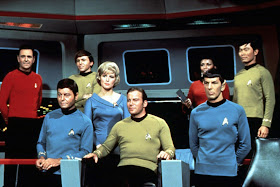Information and articles on anything and everything! The most exciting site on the planet!
Warp Drive One Step Closer - Where's Spock When You Need Him?
On April 29, NASA quietly posted an announcement: the ‘impossible’ EM Drive tested last year at the Johnson Space Center has successfully converted electricity to thrust without the need to expel any propellant. That means scientists are one step closer to an efficient drive that could propel spacecraft faster than ever before, without needing any solid fuel.
The EM Drive as presented appears to break the law of conservation of momentum: with no expulsion of propellant, there shouldn’t be anything to balance the spacecraft’s momentum during acceleration. However, Paul March, an engineer at NASA Eagleworks, posted on NASASpaceFlight.com’s forum that NASA has successfully tested the EM Drive in a hard vacuum.
In short, it works by accelerating microwaves within a closed drive cavity using the quantum vacuum, the quantum state with the lowest possible energy. In conventional scientific wisdom, this wouldn’t work – since the quantum vacuum cannot be ionized, it cannot be ‘pushed’ against to create momentum.
The EM drive was first developed in about 2001 at UK-based Satellite Propulsion Research Ltd.’s research and development program under Roger J. Sawyer. Prof. Juan Yang and Dr. Harold White also studied the drive, but none of them conducted their tests in a vacuum. Their work was met with skepticism in the scientific community, NASASpaceFlight.com said, with many physicists suggesting that the amount of thrust measured in the tests came not from within the EM drive itself but rather from natural thermal convection currents arising from the microwave heating inside the drive cavity.
March’s results have been examined to make sure the thrust didn’t come from an artifact such as thermal convection. While the results have not yet been falsified, they haven’t been detailed in an official capacity either. The question of where the thrust is coming from is still under inquiry.
However, if it proceeds to work, the EM drive could achieve thrust several thousand times stronger than that exhibited by a photon rocket. The first, most practical application would be to use EM Drive technology on the International Space Station in order to eliminate re-boost maneuvers. At present, the space station’s orbit is raised periodically by other vehicles. With the EM Drive, which would never need to be refueled, that process could be eliminated.
Beyond that, the EM Drive approaches the science fiction ideas of a warp drive. Travel between the surface of the earth and the surface of the moon could be undertaken within four hours; at present, a manned craft could make it in three days. A journey to Mars with the new drive would take 70 days one way, instead of 150 to 300 days. A trip to Alpha Centauri, the nearest star to our solar system, would take a relatively rapid 92 years.
A spacecraft equipped with the EM Drive could operate at 500 to 1,000 Newton/kW efficiency.
“A 90 metric ton, 2 MegaWatt nuclear electric propulsion mission to Mars [would have] considerable reduction in transit times due to having a thrust-to-mass ratio greater than the gravitational acceleration of the Sun (0.6 milli-g’s at 1 Astronomical Unit),” White said.
The NASA Eagleworks team has yet to test the drive in a vacuum, according to the post from April 29. If the year-over-year progress continues, though, NASA could be one step closer to a fast, fuel-less space drive.
